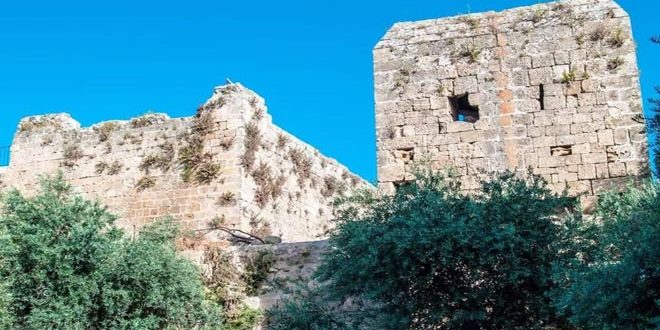“Al-Hamra Castle”, which is located about 12 km southeast of Tartus in the village of Yahmour, is one of the ancient Syrian monuments with a great civilization and cultural heritage.
Director of Tartus Antiquities Department Marawan Hassan told SANA that the history of the castle goes back to the twelfth century AD, and it is known as the Red Palace due to the red sandstones which spread in the area. Hassan added In the past, it was named Yaghmour after the Phoenician Prince Yaghmour, indicating that archaeological pieces, fragments, and flint-made two-sided axes dating back to the Assyrian era were found in the castle.
Yahmour castle consists of an external wall built of large blocks made of red sandstone with one main entrance on the southern side and a side entrance on the northern direction.
Around the wall from the inside, there are roofed porticos containing many archers, in the center of which there is a square-shaped tower with two floors, each floor is a square hall bearing the ceiling.
As for the second floor, it can be entered through an external stairway that leads to the ceiling of the eastern portico, and from it a staircase inside a corridor leads to the hall on the second floor, with an octagonal jamb in the middle on which the ceiling arches are based, according to Hassan. He added that the tower contains many archers and openings designated for guarding, and in the northwest corner there is a watchtower containing archers, and from it extends a wall composed of several arc openings connected to the front wall of the castle of the same height.
Hassan indicated that In 2001 a lead-made coffin of a girl was discovered to the southeast of the castle, it has floral and geometric motifs and it dates back to the Roman era and all the findings were preserved in the National Museum in Tartous.
Rawaa Ghanam

